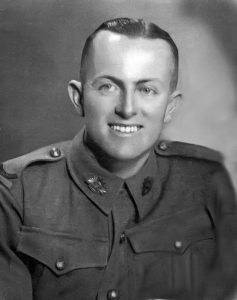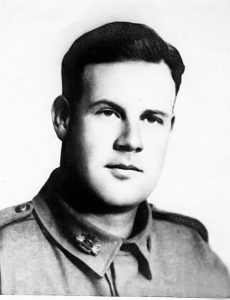Aungganaung,105 Km Burma
AUNGGANAUNG, Anganan – 105 Km CAMP Burma
‘A’ Force Burma, Green Force No. 3 Battalion
Wally Lynn with the advance party of 30 men from Meiloe 75 km Camp wrote their journey was almost entirely up mountains – on foot and other extreme fatigue the men were footsore as a result of no boots or any footwear.
This was a work camp for 9 months for Ramsay & Black Forces from Java, Green Force from Singapore, 11 May 1943 to December 1943. During this time Aunggaung was the largest POW Hospital Camps in Burma.
105km was later used as a grouping camp before POWs were evacuated to Tamarkan Camp, Thailand.
Following a full day’s work at Meiloe, the entire force was marched to Aungganaung, 105 Kilo Camp at 2100 hours and marched two days. Forced to march through a cholera-ridden area the exhausted men arrived in appalling condition. Capt. Claude Anderson of the 2/4th recalls marching at the end of the column picking up items of kit that the men had discarded along the way.
The camp was situated on a slope and the huts were the usual vermin infested, filthy atap huts. The POWs had to remove about 60 dead coolies who had died of cholera and bury them. In the jungle they found many more dead bodies as well as those who had been buried. Bert Wall was one of the POWs who was present.
The POWs worked in the wet and went to bed in the wet. With the wet weather food supplies transported by truck were delayed and the men always hungry. At one point when rations were so scarce the men were eating a minimal amount of rice and boiled water.
Some men said 105 Km Camp was not their worst camp – there was more space in the living quarters, huts were better. It depended on your health, when you were there and previous camps!
There was no hospital tent and no medical supplies. If you got sick you remained in your hut. Those who got really sick were sent back to 55 Km Camp run by Dr. Albert Coates. Coates who had little or no medical supplies.
(A humpy was set up not far from 105 km camp where women would come and stay for three or four days at a time. This Japanese comfort station had soldiers queuing outside waiting their turn. The soldiers walked, bicycled and arrived in trucks. The activities were in full view of the POWs in the camp who felt complete disgust.).
Remember the comfort women had not chosen this life – so many had been taken from their families, sometimes under false pretences and often forced, from ages as young as 12, 13, 14 years from Korea, China and other south eastern countries where Japanese rule was enforced. Please read about the tragedy of Comfort Women
In December 1943 Major Green was informed that the rail link was completed. A small Force was to be left behind under the Command of Lt-Col Williams. Some of these men remained as part of a railway maintenance party.
Lt-Col Anderson was advised to take command of all Australian personnel from Brigadier Varley, and Ramsay and Black Forces were to combine under the command of Lt-Col Ramsay. Green and Anderson Forces were to combine under the command of Major Green.
The two newly combined Ramsay and Green Forces now moved by rail in 6 parties to Tamarkan Camp, Thailand.
By January 1944 evacuation from the Burma Camps commenced. From Augganaung they travelled in open rail wagons to Tamarkan Camp more than 200 km away.
105 Kilo Camp – Williams No. 1 Mobile Force, 5 February 1944 to 25 March 1944
Williams No. 1 Mobile Force moved to 105 km Camp about 5th February meeting up with the remnants of Australian work groups still in Burma, including Robertson’s Java Party No. 5a, Burma Administration Group 5 Burma, who had been employed on woodcutting. The woodcutting party of several hundred men had to cut a quota of 1.5 metres wood per day to fuel the steam locomotives.
Although Williams Force was still in Burma in March 1944 it was about this time that the fittest men were being selected for Japan and some prisoners were being sent to the collection centre at Tamarkan.
Bert Wall was included in this lot. He had stayed behind when most of the ‘A’ Force headed south to Thailand. They remained behind with the wood chopping party. When finished Bert said about 40 POWs were loaded into one railway truck and they travelled straight through to Kanchanaburi, to the hospital. He saw and spoke with Tubby McGhee and Basil Clarke who had both undergone leg amputations.
Williams No. 1 Mobile Force like many of the other Forces, was about to commence the move south to a new chapter of their POW experience would begin.
On 22 March 1944 the camp was machine gunned by two B24 Liberator bombers. Two days later as a result, the remaining men began moving south to Kanchanaburi, Thailand. What awaited them was anybody’s guess. They always arrived at their next camp tired, hungry and more often than not, sick.
Reference Colour Patch – The men of the 2/4th Australian Machine Gun Battalion 1940 – 1945 Murray Ewen
2/4th deaths at Augganaung:
WX10366 Fraser, Norman Wilson died of cholera 4 June 1943 aged 29 years. Became ill at 0830 hours on 4 June 1943 after drinking contaminated water.

Fraser had smuggled a camera which he had used during captivity. The undeveloped films were buried at the head of his grave. However when recovered by War Graves Party at the end of the war the films had unfortunately deteriorated beyond use.
WX10164 RUSSELL, Douglas Norman (Doug or Rusty) enlisted whilst working as a bank clerk for Commonwealth Bank, Mt Magnet 18 Dec 1940.

He joined ‘B’ Coy 8 Platoon.
As POW in Singapore Russell left with first work party ‘A’ Force Burma, Green Force No. 3 Battalion with Norm Fraser (above).
Russell died of cerebral malaria aged 28 years at Aungangaung 105km Hospital Camp 21 Jan 1944.See ‘B’ Coy 8 Platoon
******************
TOM FAGAN POW DIARY 105 Kilo Camp June-July 1943 – X47533 Lance Corporal T H Fagan, 105 General Transport Company
5 June 1943 – Cholera has broken out and four men died last night (including WX10366 Norm FRASER 2/4th MGB) others are being isolated in a hut to be monitored. The orderlies are doing a marvellous job nursing them at the risk of their lives.
10 June 43 – Four things govern our lives – RAIN, MUD, RICE and WORK.
It breaks my heart to see so many starving and unhealthy men.
Hundred are just lying on their bed-spaces, unable to move or fend for themselves. Dysentery, malaria, pellagra and malnutrition are making inroads upon so many already weakened and crippled.
Those of us who survive will always remember the railroad of death and our barbaric tormentors, who put us through hell and caused the death of so many of our mates.
Very few have footwear, our legs filthy masses of tropical ulcers that run from knee to ankle. The only treatment is boiling water packs. The greatest fear is gangrene. (There are no bandages or cloth of any kind. Not even rice bags to cover their ulcers. No Medicines.)
I hate and despise these barbaric Japanese, and the just as sadistic Korean guards for the suffering they mete out to humans, and animals and birds. There is no end to the lengths to which they’ll go to inflict pain. I seeth with fury as I feel and see their bursts of cruelty.
(One cannot help but feel Tom Fagan’s absolute and total despair for their situation and the POWs)
In pre-war days, or more particularly before becoming POWs of Japan, no-one could have ever convinced me I would see grown, supposedly educated men, go to such lengths to cause hardship and horror, or to perpetuate, deliberately, demoniacal acts of unbelievable violence towards men, women, children or animal life.
